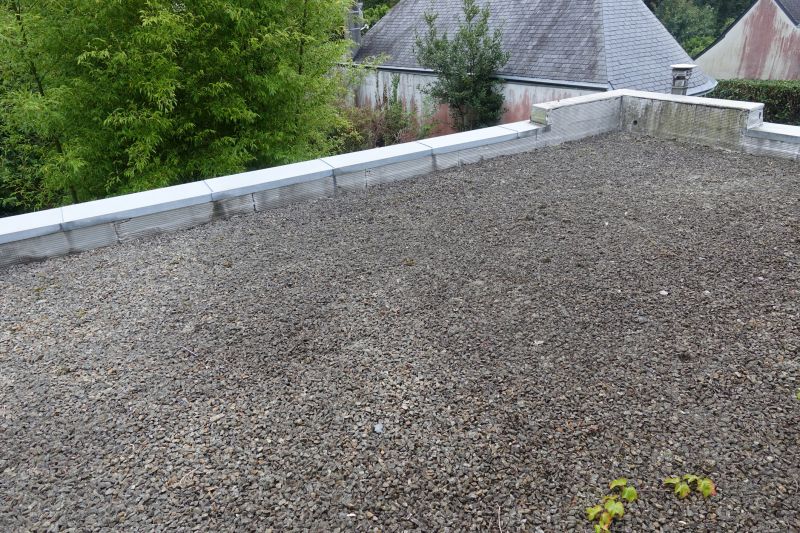Leading Products For Tar And Gravel Roof Repairs You Can Trust
Explore top-rated solutions designed to restore and protect your tar and gravel roof effectively and efficiently.
 Tar and gravel roofs are a common choice for flat or low-slope roofing applications, valued for their durability and straightforward installation. Over time, however, these roofs may require repairs due to weathering, cracking, or damage from debris. Selecting the right products for tar and gravel roof repairs is essential to ensure a proper seal and extend the lifespan of the roof. Repair materials must be compatible with existing roofing components and capable of providing a weather-resistant barrier.
Tar and gravel roofs are a common choice for flat or low-slope roofing applications, valued for their durability and straightforward installation. Over time, however, these roofs may require repairs due to weathering, cracking, or damage from debris. Selecting the right products for tar and gravel roof repairs is essential to ensure a proper seal and extend the lifespan of the roof. Repair materials must be compatible with existing roofing components and capable of providing a weather-resistant barrier.
Top Overall Option
Liquid Roofing Sealant
A versatile liquid roofing sealant offers a seamless, flexible coating that can be applied over damaged areas of tar and gravel roofs. It adheres well to existing roofing materials, providing a durable, weather-resistant barrier. Its ease of application makes it suitable for both small repairs and larger restoration projects, helping to maintain the roof’s integrity over time.
Types of Products For Tar And Gravel Roof Repairs
Roofing Patches
Pre-cut or self-adhesive patches designed for quick repairs on localized damage or tears in the roofing surface.
Roofing Cement
A thick, adhesive compound used to seal cracks, seams, and small holes in tar and gravel roofs.
Liquid Roof Coatings
Fluid coatings that can be brushed, rolled, or sprayed onto the roof surface to provide a seamless protective layer.
Bitumen Roll Roofing
Self-adhesive or torch-applied rolls that serve as a repair layer or patch for damaged sections.
Asphalt Emulsion
A liquid asphalt mixture used to restore or reinforce damaged areas with a flexible, waterproof coating.
Repair Tapes
Heavy-duty tapes designed for quick sealing of small leaks or cracks on the roofing surface.
Roofing Mesh
Reinforcing mesh used in conjunction with sealants or coatings to add strength to repairs.
Cold Applied Roofing Systems
No-heat systems that provide an easy-to-apply repair solution for minor damages.
Hot Asphalt
Traditionally used in torch-down applications, suitable for larger repairs when heated and applied properly.
Polyurethane Foam
A spray-applied foam that can fill in gaps and cracks, providing insulation and waterproofing.
Elastomeric Coatings
Flexible coatings that expand and contract with the roof, helping to prevent future cracking.
Roofing Adhesives
Specialized adhesives for bonding patches or repair materials securely to the existing roof surface.
Popular Choices
Widely used for quick patching of localized damage, available in various sizes.
Commonly utilized for sealing small cracks and seams on tar and gravel roofs.
Popular for creating a seamless, waterproof surface over repaired areas.
Favored for fast, temporary fixes on minor leaks or tears.
Often selected for larger patching projects or overlay repairs.
Chosen for their flexibility and ability to accommodate roof movement.
Used for restoring damaged areas with a durable, waterproof layer.
Popular for reinforcing patches and coatings, enhancing repair strength.
Preferred for easy application without heat equipment.
Valued for filling large cracks and providing insulation benefits.
Repairing a tar and gravel roof involves addressing various issues such as cracks, blisters, or punctures. The process often includes cleaning the damaged area, applying patching compounds, and sealing with appropriate coatings. Using high-quality repair products can help prevent leaks and further deterioration, saving time and money in the long run. It is important to follow manufacturer instructions carefully to achieve optimal results.
Different repair products are designed for specific issues, from small patches to large repairs. Some products are formulated for quick fixes, while others are suited for more extensive restoration projects. Choosing the right product depends on the size of the damage, the location on the roof, and the existing roofing materials. Properly applied repairs can restore the integrity of the roof, providing protection against water intrusion and environmental exposure.
Key Buying Considerations
- Compatibility with existing roofing materials to ensure proper adhesion.
- Type and extent of damage to determine the appropriate repair product.
- Ease of application, especially for DIY repairs or professional use.
- Weather resistance and durability of the repair material under local conditions.
- Flexibility of the product to accommodate roof movement without cracking.
- Coverage area to ensure sufficient quantity for the repair size.
- Curing or drying time to plan repair schedules effectively.
- Compatibility with coatings or sealants already applied on the roof.
- Cost-effectiveness relative to the repair scope and longevity.
- Availability of the product and ease of obtaining supplies locally or online.
- Manufacturer instructions and recommended application techniques.
- Safety considerations during application, including ventilation and protective gear.
- Environmental factors such as UV exposure or ponding water that might affect repair performance.
- Potential need for multiple layers or coatings for larger repairs.
- Warranty or guarantee offered by the product manufacturer.
